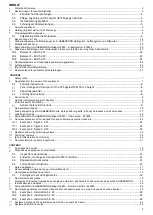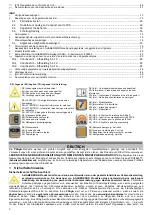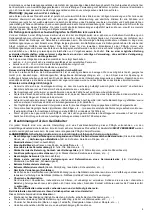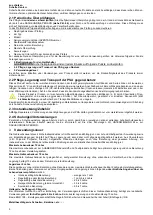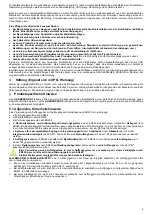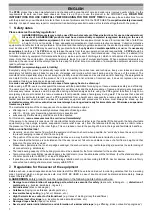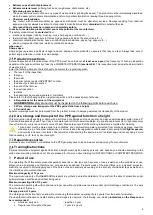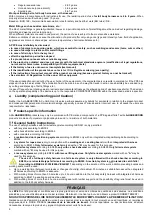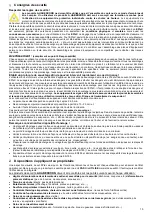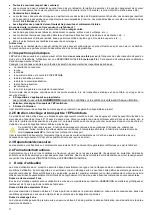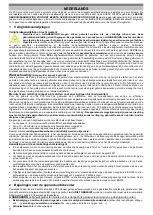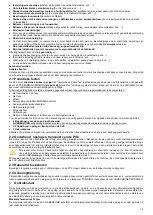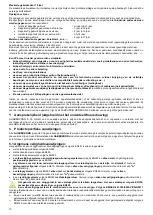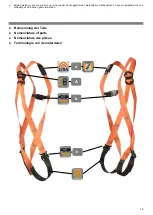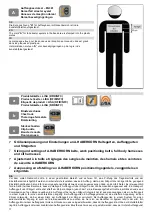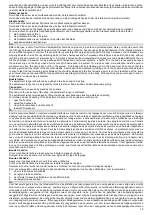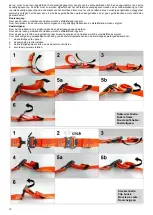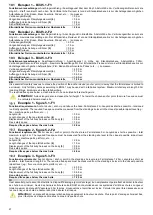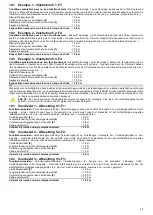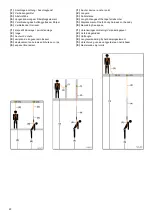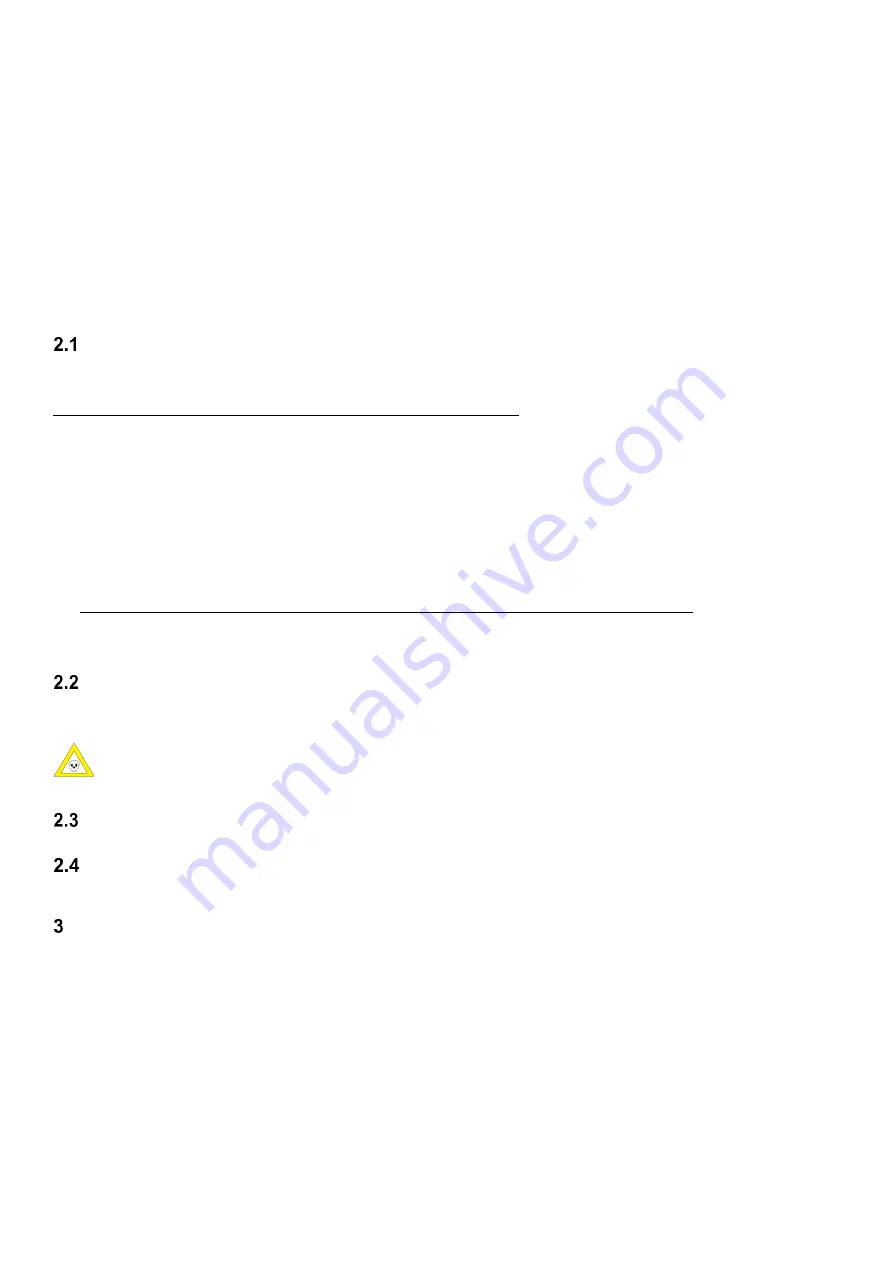
8
•
Extreme rope sheath displacement
•
Extreme material wear
(rubbing, fuzziness, rough areas, chafe marks, etc.)
•
All sewing (seam patterns)
The seam patterns must not show any signs of wear and tear (rubbing/fuzziness). The product must be immediately discarded,
when the seam pattern shows discoloration and/or only partial discoloration (sewing thread, sewing cotton).
•
Chemical contamination
Any contact with chemical substances, especially with acids, must be absolutely avoided. Damage resulting from chemical
exposure may not always be visible. Textile products must be immediately
discarded
after contact with acids.
•
All product labels must be in place and completely legible.
In case of uncertainties please contact your sales partner or the manufacturer
This safety product must be
protected
from:
•
mechanic damages (rubbing, crushing, cuts, sharp edges, overload etc….)
•
thermal stress (direct exposure to flames, flying sparks, all ki
nds of heat sources, etc….)
•
chemical contamination (acids, bases, solid and liquid substances, gases, fog, vapour etc….)
•
and any imaginable influences, which could lead to damage
when used
.
Sharp edges:
Sharp edges represent a particular danger and can damage textile products so severely that they can tear. Always take care of
perfect edge protection in order to avoid damage.
Periodic inspections
A visual inspection and functional test of the PFPE must be carried out
at least once a year
(the frequency of such an inspection
depends on the type and intensity of use) by a COMPETENT PERSON
(see item 2.4)
. This inspection must include the determination
of wear and tear.
Enter the following data into the test sheet to document the regular inspection:
•
The result of this inspection
•
the type
•
the model
•
the serial number and/or INVENTORY number
•
the date of purchase/production
•
the date of the first use
•
the next inspection
•
remarks
•
the examiner’s name and signature or his initials
Please refer to the following notes on regular inspection and the assessment of safe use:
•
2. Regulations for the owner of the equipment
A.HABERKORN
safety products must be inspected on the following points before each use:
•
2.2 Care, storage and transport of the PPE against falls from a height
•
3. Period of use
Labels or markings must not be removed from the product in order to always guarantee the traceability of the product.
Care, storage and transport of the PPE against falls from a height
This product can be cleaned dry or damp with a soft brush. Webbings and ropes can also be cleaned with lukewarm water (max. 40°
C) and mild soapsuds by hand. Then rinse in cold water and let it dry in a well ventilated, dry and shady place (avoid UV light exposure)
(never tumble dry or dry over a direct source of heat). Please take care that the marking labels remain legible after cleaning.
This product must be stored under dry conditions, at an ambient temperature, protected from mechanic damage, chemical
influences (e.g. of chemical substances, oil, solvents and other aggressive substances), direct sunlight (
UV light exposure
)
and outside a transport container. We recommend transporting the device in a UV resistant bag and not exposing it more
than necessary to UV rays by direct sunlight.
Repair/Accessories
Eventual repair, modification or additions to the PPE generally have to be carried out exclusively by the manufacturer.
Training/Instructions
Personal protective equipment against falls from a height must only be used by persons, who have been instructed according to the
valid national working conditions act. We are pleased to inform you about training for INSTRUCTIONS or COMPETENT PERSONS.
Period of use
The operating life of this safety product essentially depends on the type and frequency of use as well as on the conditions of use,
diligent care and storage and therefore can not generally be defined.
Products made of chemical fibres (e.g.: polyamid, polyester,
aramid) are subject to certain ageing even if they are not used, especially depending on the intensity of ultraviolet rays as well as on
the climatic environmental influences.
Maximum longevity of 12 years
The maximum longevity of A.HABERKORN products in synthetic and textile material is 12 years from the date of production under
optimal storage conditions and without being used.
Maximum operating life of 10 years
The maximum operating life with occasional, proper use without visible wear and tear under optimal storage conditions is 10 years
from the date of first use.
Storage period of 2 years
The storage period before first use and without reducing the maximum operating life is 2 years from the date of production.
Provided that all instructions on safe handling and storage are observed, the following, non-binding
indications on the lifespan can
be recommended
:
•
Intensive, daily use
- less than 1 year
•
Regular use throughout the year
- 1 year to 2 years
Summary of Contents for UNI-1
Page 28: ...28...


